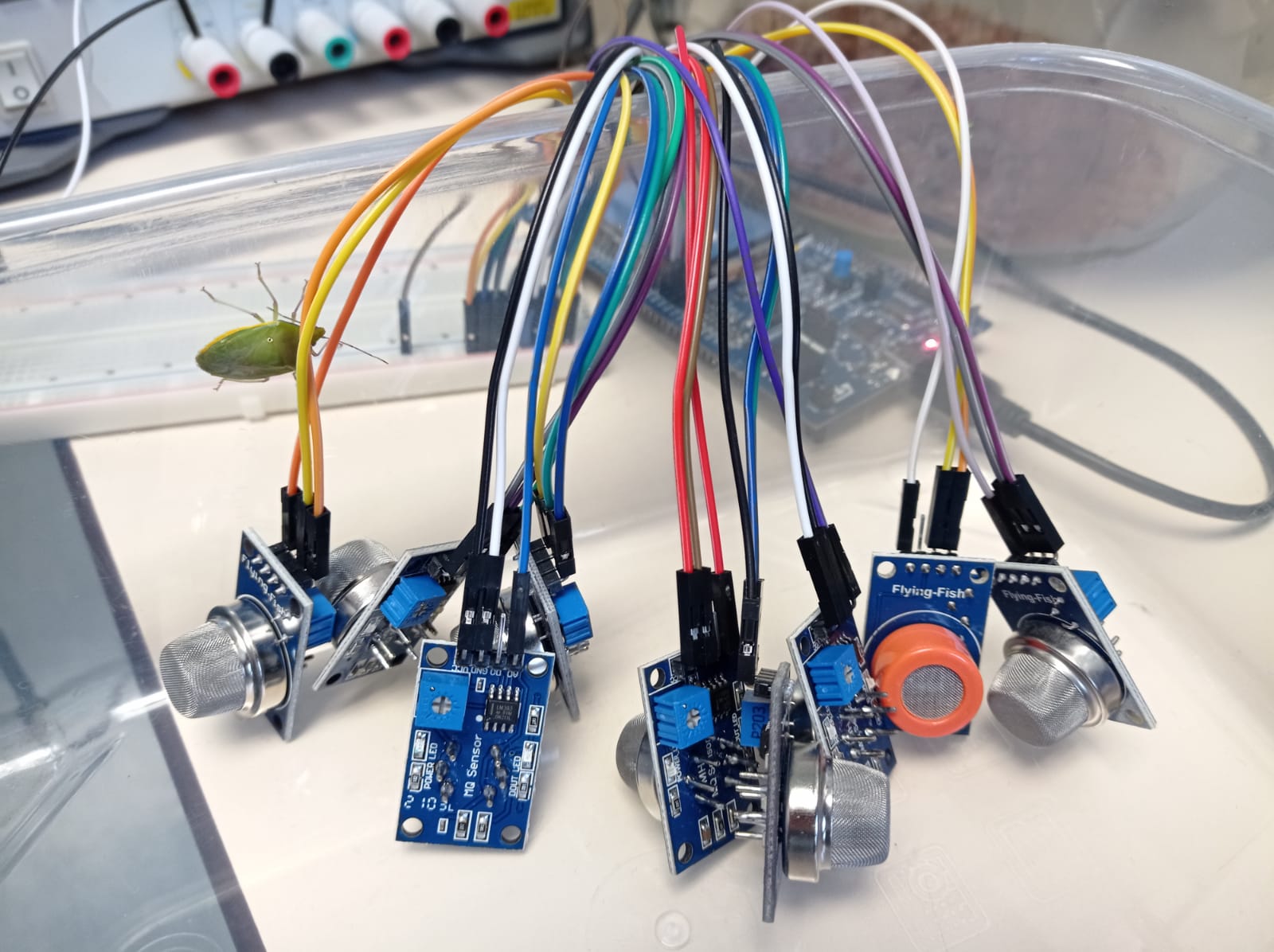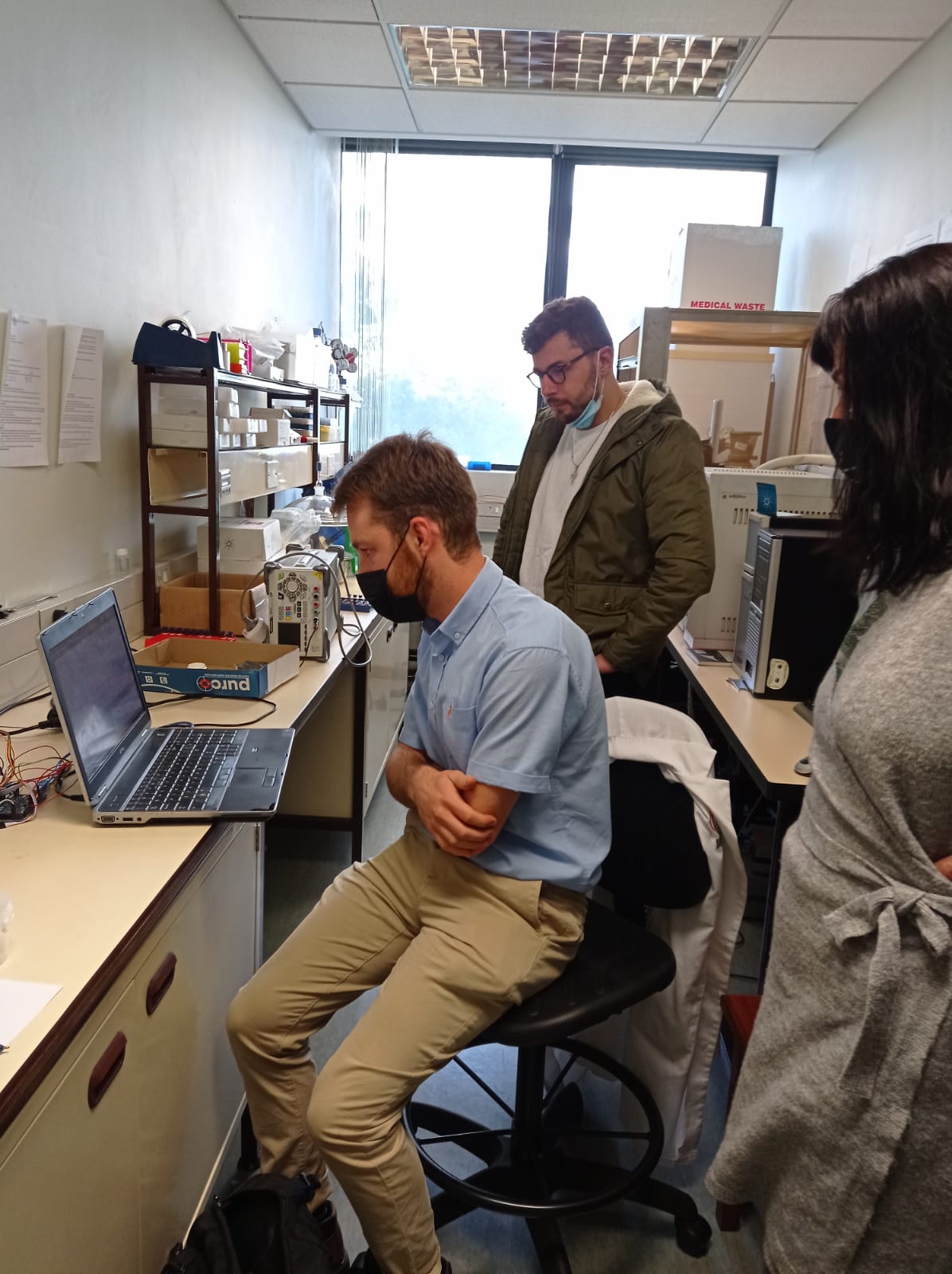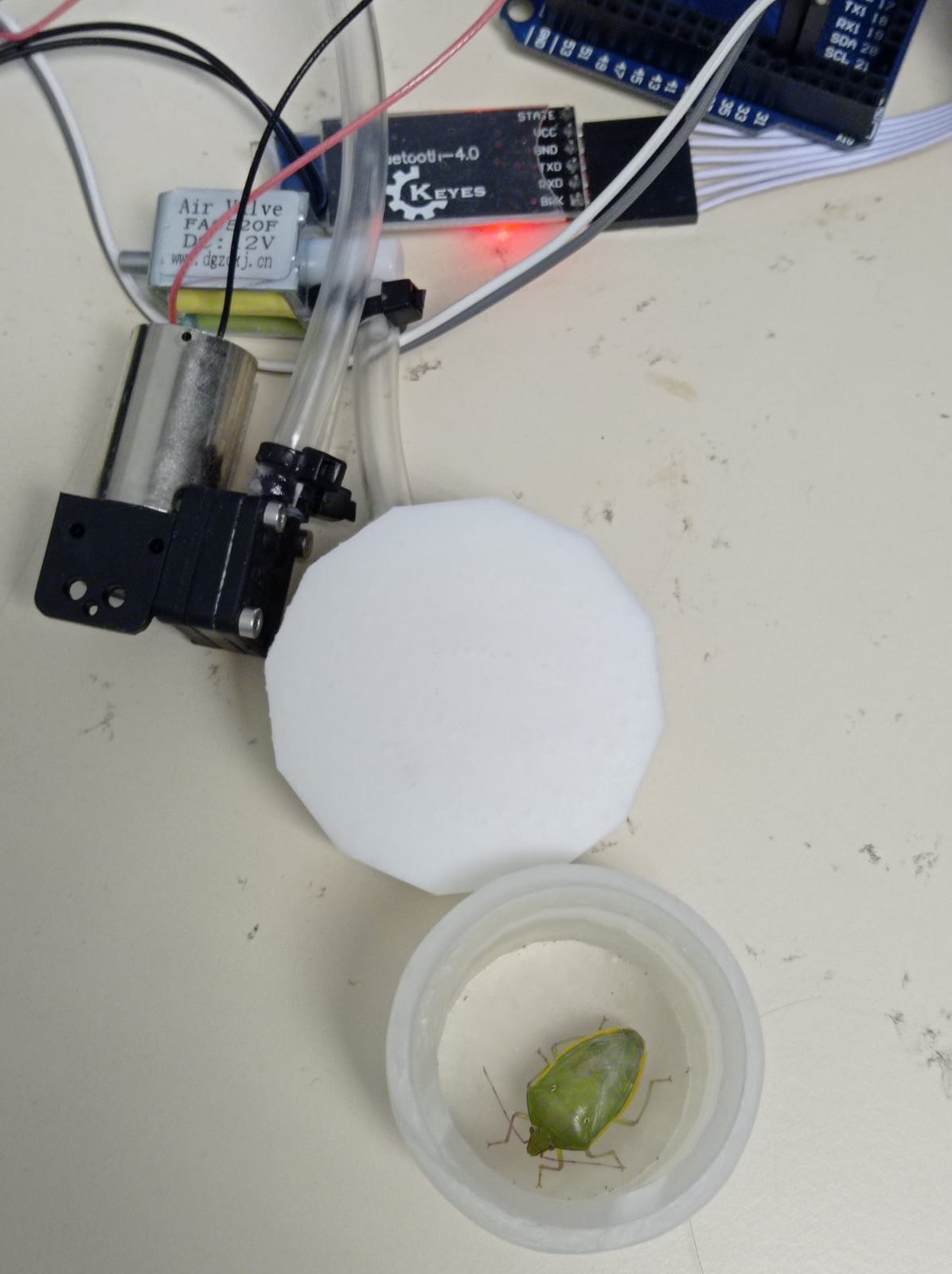Can you sense how I stink? 2022-06-20
Professor Trudi Joubert, Director of the Carl and Emily Fuchs Institute for Microelectronics (CEFIM) from the Department of Electrical, Electronic, and Computer Engineering at the University of Pretoria, together with Archibald Rohde (MEng student) and Nolan Hermann (final year BEng student), recently visited PhD candidate Elisa Pal from the Macadamia Protection Programme (MaPP). The objective of this visit was to test multiple gas sensors or “e-noses”, developed by Prof. Joubert and her students, to detect Bathycoelia distincta (Two-spotted stink bug). The two-spotted stink bug is currently regarded as the most damaging pest in macadamia orchards. The presence of stink bugs in macadamia orchards is typically monitored via “scouting” by applying insecticide on 10 trees. Gas sensors are incredible devices which can be used to detect chemical compounds present in the air, water or even in the food chain to detect contamination by bacteria. An e-nose combines an array of non-specific gas sensors with a machine learning algorithm trained for a specific application. Although these devices can be a powerful tool in Integrated Pest Management (IPM) to detect pests, their utilisation is still underestimated. Thus, developing an e-nose able to detect B. distincta could largely improve IPM practises for Macadamia growers and reduce the amount of insecticide used. Thankfully, this bug is very ‘stinky’ and its alarm pheromone, that was identified and characterised by Elisa Pal during her PhD, could be detected by these e-noses as gas signatures. Overall, this was a successful day with some promising results obtained by the team and a good example of transdisciplinary research in biology, chemical ecology, microelectronics, and engineering!




